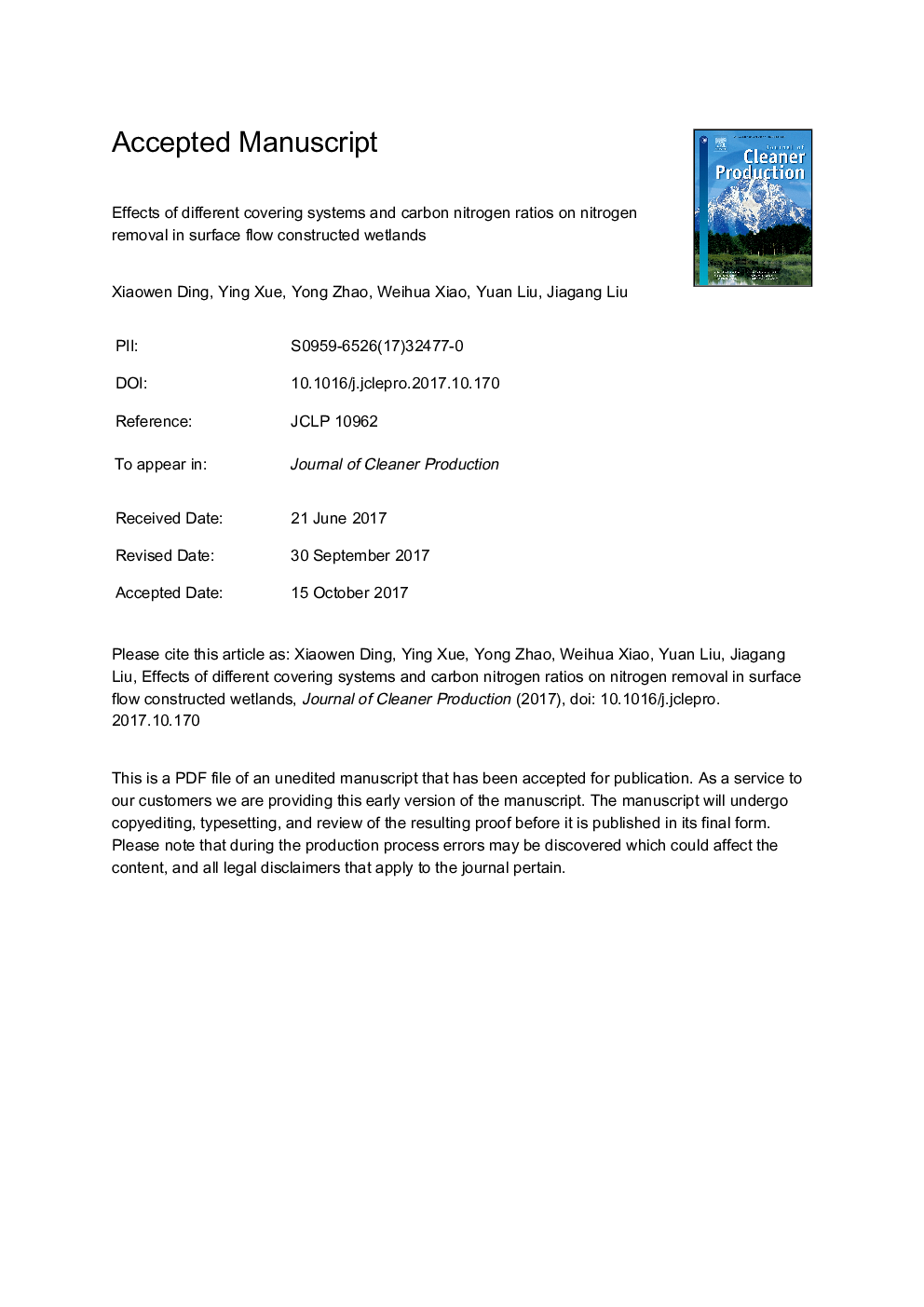| Article ID | Journal | Published Year | Pages | File Type |
|---|---|---|---|---|
| 8099937 | Journal of Cleaner Production | 2018 | 33 Pages |
Abstract
Constructed wetland is one of the effective ecological technologies for wastewater purification. The effects of different covering systems on nitrogen transformation were evaluated in small-scale surface flow constructed wetlands. The study revealed the effect mechanism of different covering systems and carbon nitrogen ratio on nitrogen removal for optimizing the structure of surface flow constructed wetlands to the maximum nitrogen removal. The temperature condition was set about 10 °C, and the experiments consisted of water tanks with plant coverings, a foam board covering, as well as no covering (blank). The waste water was supplemented with peptone to supply organic nitrogen, ammonium sulphate to supply ammonia nitrogen, or potassium nitrate to supply nitrate nitrogen, as well as carbon and phosphorus sources. The results showed that plants were conducive to organic nitrogen and ammonia nitrogen removal, and large coverage systems were favored of nitrate nitrogen removal. Nitrification was the key step in nitrogen removal. The amounts of ammonifying bacteria, nitrifying bacteria and denitrifying bacteria were significantly positive with removal rate of organic nitrogen, ammonia nitrogen and nitrate nitrogen, respectively. In the plant-based wetlands, organic nitrogen and ammonia nitrogen removal rates decreased and nitrate nitrogen one increased as carbon nitrogen ratio increased. These results provide a theoretical basis for optimizing the structure of small-scale surface flow constructed wetlands to control non-point source pollution.
Related Topics
Physical Sciences and Engineering
Energy
Renewable Energy, Sustainability and the Environment
Authors
Xiaowen Ding, Ying Xue, Yong Zhao, Weihua Xiao, Yuan Liu, Jiagang Liu,
